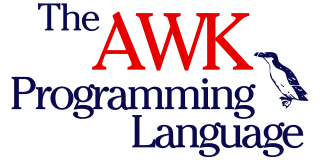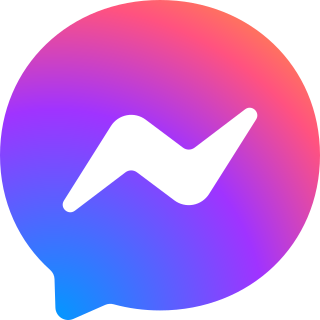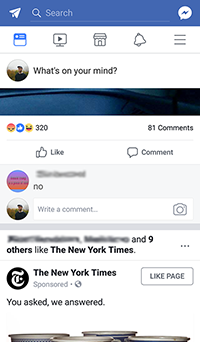
Dale Dougherty (born 1956) is a co-founder of O'Reilly Media, along with Tim O'Reilly and helped develop O'Reilly's publishing business. He is the author of the O'Reilly book sed & awk. [1]

Dale Dougherty (born 1956) is a co-founder of O'Reilly Media, along with Tim O'Reilly and helped develop O'Reilly's publishing business. He is the author of the O'Reilly book sed & awk. [1]
Dougherty was the founder, in 1993, and publisher of the Global Network Navigator (GNN), the first web portal and the first site on the internet to be supported by advertising. In 1995, AOL purchased GNN from O'Reilly & Associates. Part of the transaction included an investment by AOL of $3 million for 20 percent of O'Reilly's Songline Studios, which Dougherty ran. The organization published the Web Review and the Music Critic sites on the Internet. [2]
Dougherty helped popularize the term "Web 2.0" at the O'Reilly Media Web 2.0 Conference in late 2004, though it was coined by Darcy DiNucci in 1999. [3] [4] [5] [6]
Dougherty is considered by some as the Father of the Maker Movement. [7] [8] Dougherty was the CEO of Maker Media, [9] a spin-off from O'Reilly Media. [10] The company published Make magazine, beginning in 2005, had an ecommerce site (Makershed), and conducted Maker Faires worldwide. In June 2019, the company ceased operations and laid off all 22 staff. [11]
In late 2017 Dougherty came under fire for questioning the authenticity of female maker Naomi Wu. [12] Dougherty publicly apologized to Wu for "my recent tweets questioning your identity," saying they represented a failure to live up to the inclusivity that Make magazine valued. Wu herself considers the matter settled. [13] [14] [15]
In July 2019, Dougherty said that he had bought back the brands, domains, and content from creditors and rehired 15 of the laid-off staffers, and would announce the relaunch of the company with the new name “Make Community.” [16]

AWK is a domain-specific language designed for text processing and typically used as a data extraction and reporting tool. Like sed and grep, it is a filter, and it is a standard feature of most Unix-like operating systems.

sed is a Unix utility that parses and transforms text, using a simple, compact programming language. It was developed from 1973 to 1974 by Lee E. McMahon of Bell Labs, and is available today for most operating systems. sed was based on the scripting features of the interactive editor ed and the earlier qed. It was one of the earliest tools to support regular expressions, and remains in use for text processing, most notably with the substitution command. Popular alternative tools for plaintext string manipulation and "stream editing" include AWK and Perl.
O'Reilly Media, Inc. is an American learning company established by Tim O'Reilly that provides technical and professional skills development courses via an online learning platform. O'Reilly also publishes books about programming and other technical content. Its distinctive brand features a woodcut of an animal on many of its book covers. The company was known as a popular tech conference organizer for more than 20 years before closing the live conferences arm of its business.

Timothy O'Reilly is an Irish-American author and publisher, who is the founder of O'Reilly Media. He popularised the terms open source and Web 2.0.

Web 2.0 refers to websites that emphasize user-generated content, ease of use, participatory culture, and interoperability for end users.
The Global Network Navigator (GNN) was the first commercial web publication and the first web site to offer clickable advertisements. It was designed by Jennifer N. Robbins. GNN was launched in May 1993, as a project of the technical publishing company O'Reilly Media, then known as O'Reilly & Associates. In June 1995, GNN was sold to AOL, which continued its editorial functions while converting it to a dial-up Internet Service Provider. AOL closed GNN in December 1996, moving all GNN subscribers to the AOL dial-up service.
Make is an American magazine published since February 2005 which focuses on do it yourself (DIY) projects for individuals and groups, involving computers, electronics, metalworking, robotics, woodworking and other disciplines. The magazine is marketed to people who enjoyed making things and features complex projects which can often be completed with cheap materials, including household items. Make has been described as "a central organ of the maker movement".

Maker Faire is a convention of do it yourself (DIY) enthusiasts established by Make magazine in 2006. Participants come from a wide variety of interests, such as robotics, 3D printing, computers, arts and crafts, and hacker culture.
Craft: was a quarterly magazine published by O'Reilly Media which focused on do it yourself (DIY) projects involving knitting, sewing, jewelry, metalworking, woodworking, and other disciplines. The magazine was marketed to people who enjoy "crafting" things and features projects which can often be completed with cheap materials, including household items. The magazine was in circulation between 2006 and 2009.

Lisa Gansky is an American entrepreneur and author.

The maker culture is a contemporary subculture representing a technology-based extension of DIY culture that intersects with hardware-oriented parts of hacker culture and revels in the creation of new devices as well as tinkering with existing ones. The maker culture in general supports open-source hardware. Typical interests enjoyed by the maker culture include engineering-oriented pursuits such as electronics, robotics, 3-D printing, and the use of computer numeric control tools, as well as more traditional activities such as metalworking, woodworking, and, mainly, its predecessor, traditional arts and crafts.

Instagram is an American photo and video sharing social networking service owned by Meta Platforms. It allows users to upload media that can be edited with filters, be organized by hashtags, and be associated with a location via geographical tagging. Posts can be shared publicly or with preapproved followers. Users can browse other users' content by tags and locations, view trending content, like photos, and follow other users to add their content to a personal feed. A Meta-operated image-centric social media platform, it is available on iOS, Android, Windows 10, and the web. Users can take photos and edit them using built-in filters and other tools, then share them on other social media platforms like Facebook. It supports 32 languages including English, Hindi, Spanish, French, Korean, and Japanese.

Jennifer Pahlka is an American businesswoman and political advisor. She is the founder and former executive director of Code for America. She served as US Deputy Chief Technology Officer from June 2013 to June 2014 and helped found the United States Digital Service. Previously she had worked at CMP Media with various roles in the computer game industry. She was the co-chair and general manager of the Web 2.0 conferences. In June 2023, she released the book Recoding America: Why Government Is Failing in the Digital Age and How We Can Do Better.

Messenger, also known as Facebook Messenger, is an American proprietary instant messaging service developed by Meta Platforms. Originally developed as Facebook Chat in 2008, the client application of Messenger is currently available on iOS and Android mobile platforms, Windows and macOS desktop platforms, through the Messenger.com web application, and on the standalone Facebook Portal hardware.
The following is a timeline of the history of the photo messaging software Snapchat.
TestFlight is an online service for over-the-air installation and testing of mobile applications, currently owned by Apple Inc. and only offered to developers within the iOS Developer Program. Developers sign up with the service to distribute applications to internal or external beta testers, who can subsequently send feedback about the application to developers. The TestFlight SDK additionally allows developers to receive remote logs, crash reports and tester feedback.
Maker education closely associated with STEM learning, is an approach to problem-based and project-based learning that relies upon hands-on, often collaborative, learning experiences as a method for solving authentic problems. People who participate in making often call themselves "makers" of the maker movement and develop their projects in makerspaces, or development studios which emphasize prototyping and the repurposing of found objects in service of creating new inventions or innovations. Culturally, makerspaces, both inside and outside of schools, are associated with collaboration and the free flow of ideas. In schools, maker education stresses the importance of learner-driven experience, interdisciplinary learning, peer-to-peer teaching, iteration, and the notion of "failing forward", or the idea that mistake-based learning is crucial to the learning process and eventual success of a project.

Facebook's Feed, formerly known as the News Feed, is a web feed feature for the social network. The feed is the primary system through which users are exposed to content posted on the network. Feed highlights information that includes profile changes, upcoming events, and birthdays, among other updates. Using a proprietary method, Facebook selects a handful of updates to show users every time they visit their feed, out of an average of 2,000 updates they can potentially receive. Over two billion people use Facebook every month, making the network's Feed the most viewed and most influential aspect of the news industry. The feature, introduced in 2006, was renamed "Feed" in 2022.

Naomi Wu, also known as Sexy Cyborg, is a Chinese DIY maker and internet personality. As an advocate of women in STEM, transhumanism, open source hardware, and body modification, she attempts to challenge gender and tech stereotypes with a flamboyant public persona, using objectification of her appearance to inspire women.
{{cite web}}: CS1 maint: multiple names: authors list (link)I first heard the phrase 'Web 2.0' in the name of the Web 2.0 conference in 2004.
![]() Media related to Dale Dougherty at Wikimedia Commons
Media related to Dale Dougherty at Wikimedia Commons